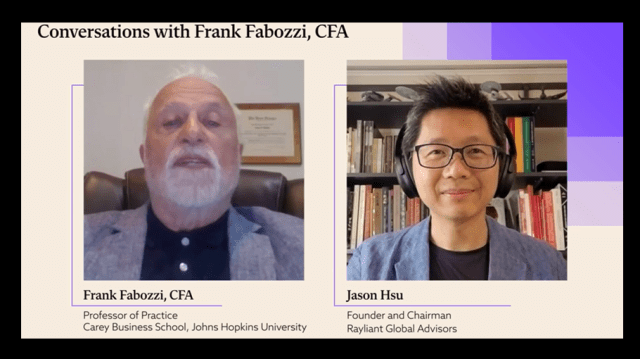Book Review: Investing in the Era of Climate Change
Investing in the Era of Climate Change. 2022. Bruce Usher. Columbia University Press. The scientific consensus is that climate change is real, occurring now, and potentially catastrophic. As a result, most countries have committed to reductions in greenhouse gas emissions with the aim of “net zero” emissions by the middle of the 21st century. To achieve the reductions, innovation and investment are needed on a large scale. Bruce Usher of Columbia Business School approaches the issue from the perspective of the investor, and in Investing in the Era of Climate Change, he identifies both what the implications of climate change are for the investment community and how investment capital allows us “to save us from ourselves.” The role of investors, he says, is no less than “financing the world’s future.” Early in the book, Usher gives an account of technological developments that can mitigate the effects of climate change — renewable power, electric vehicles, battery storage, green hydrogen, and carbon removal. This discussion serves as a valuable introduction to later sections that deal with the implications of such climate solutions for the investment community. One section identifies the alternative strategies that the investor can use: Risk Mitigation Divestment Environmental, Social, and Governance (ESG) Investing Thematic Impact Investing (to finance businesses that address a specific environmental or social challenge, such as climate change) Impact First Investing (in which investors focus on solving social and environmental problems and are willing to accept a below-market financial return in exchange for greater impact) Each of these strategies is suitable for a particular kind of investor. University endowments may opt for Divestment, large fund managers for ESG, specialist fund managers for Thematic Impact Investing, and philanthropists for Impact First Investing. Some approaches help to control risks; others (according to Usher) can improve returns. Asserting that “all investors should understand the opportunities and risks of investing in real assets that offer climate solutions,” the author then looks at both financial and real assets. Real assets include renewable energy projects, real estate, and forestry and agriculture. His analysis examines the valuation issues relevant to large-scale renewables projects, along with insights into government incentives and prospective returns (internal rates of return of 6%–8% for solar and wind projects and potentially more return for higher risk investments in battery energy storage systems). The discussion of real estate is brief but includes such considerations as the risks from flooding and wildfires as well as the benefits of energy upgrades — the Empire State Building is an interesting example. The importance of carbon markets is illustrated by the chapter on forestry and agriculture. The author’s analysis of financial assets includes chapters on venture capital, private equity, public equity, equity funds, and fixed income. We are given interesting examples of successful and unsuccessful investments, along with the following approaches to assessing investments in the era of climate change: Is a company minimizing risk by reducing its emissions, both direct and indirect? What would be the impact of a price on carbon? Is the company an incumbent in an industry or a disruptor? If a disruptor, how likely is it to succeed? The chapter on equity funds identifies many types of currently available climate-focused funds and exchange-traded funds (ETFs). The analysis covers the differences among low-carbon funds, fossil-fuel-free funds, and climate transition funds. The author notes that some of these funds are particularly large and successful: “BlackRock’s Carbon Transition Readiness ETF pulled in $1.3 billion on its first day of trading, making it the biggest launch in the ETF industry’s three-decade history.” A successful fund launch is one example of how investing in climate solutions has become mainstream. So too is the establishment of such bodies as the Glasgow Financial Alliance for Net Zero — “a global coalition of 450 financial firms managing assets of more than $130 trillion that are committed to reducing greenhouse gas emissions to zero.” The author believes that the fixed-income markets will be the most important for the funding of climate solutions. Part of the reason is their scale, and part is because many projects, with steady cash flows over long periods of time, lend themselves to debt financing. An important area is that of “green bonds,” the market for which is described as “red hot.” In 2021, $500 billion of green bonds were issued. Other innovations in fixed-income investing include the securitization of solar leases and loans. Several times throughout this book, we read estimates of the costs of necessary climate solutions. The various numbers can be confusing, but all are broadly consistent with a Boston Consulting Group estimate of what is required: $3 trillion to $5 trillion per year. This enormous level of investment is a huge step up from where we are today (spending of circa $600 billion a year, according to Usher). The investment is necessary, however, especially because other possible responses to climate change can be convincingly rejected. (These alternatives include adaptation and the control of population growth.) A welcome aspect is that the general tone of the book is upbeat, with a focus on solutions rather than resorting to despair. At times, however, this approach means glossing over certain risks to climate targets. For example, livestock make a material contribution to greenhouse gases (in the form of methane), but apart from references to the success of Beyond Meat, the author offers us few solutions to the issue of livestock. Similarly, he says little about how to mitigate emissions caused by the production of cement. Furthermore, although he does write that “perhaps the greatest challenge to reaching net zero is the inability by countries to cooperate,” he says little about how dependent we are on fragile global supply chains for solutions, such as battery storage systems. The author makes clear, however, that his goal is not to describe every possible solution to the climate crisis but to focus on the implications of climate change for investors. Investing in the Era of Climate Change draws from a wide variety of sources and is
Book Review: Investing in the Era of Climate Change Read More »













